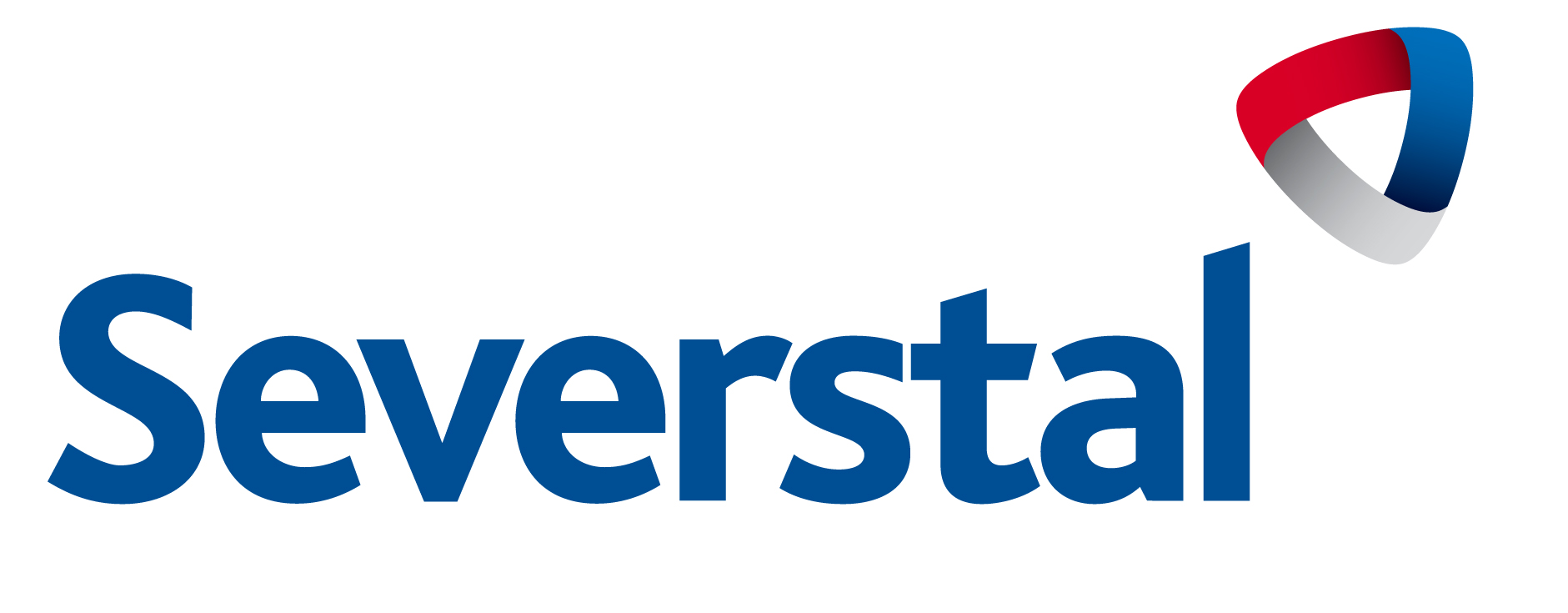Intelligent system for automatic control of distributed power locomotives ISAVP-RT
Purpose
Intelligent system for automatic control of distributed power locomotives ISAVP-RT is suitable for automatic and manual control of distributed power (DP) locomotives. The ISAVP-RT system can provide autopilot mode of DP locomotives of blocked trainaccording to train data, track profile and plan, all types of speed limit, schedule and traffic light signals.ISAVP-RT goals
- Automatic joint train driving in auto-driving (autopilot) mode in all regimes – traction, pneumatic brake, electro-dynamic brake
- Allows a single operator to control multiple sets of locomotives in the same train in operator control mode
- Adviser mode
- Automatic execution of optimal power consumption trajectory
- Reduction static and dynamic forces in the train
- Simple control of different series locomotives in one joint train
ISAVP-RT distributed power benefits
ISAVP-RT as any other control joint train locomotives systems:- Reduces static and dynamic forces in the train
- Reduces time of brake and release
- Reduces forces against the rails in curves
- Provides rapid deployment of blocked train to multiple destinations
- Reduces crew needs
- Greatly increases corridor throughput
ISAVP-RT autopilot benefits
- Automatic driving joint train according to schedule
- Automatic speed control to provide allowed speed maintenance
- Automatic execution of allowed speed according to traffic lights
- Automatic power redistribution among locomotives in the train
- Event registration
- Possibilities to use in one train different locomotives including locomotives with both discrete and analog control
- Flexible adaptation to different locomotives including old ones.

Operation principles of ISAVP-RT system
Auto-driving subsystem of ISAVP-RT is installed on all locomotives (both master and slaves). Master locomotive’s system provides calculations of locomotive control modes for realize energy saving train control. Those control modes are interpreted as a control commands for all locomotives. Control commands are transmitted to slave locomotives by secure radio channel, the slave locomotive status information returns via radio channel as a feedback. Selection of notches at each locomotive provides considering the track profile and plan for the actual locomotive position.
Calculation of control occurs at the current moment, which provides instant response to the changing train operation conditions.
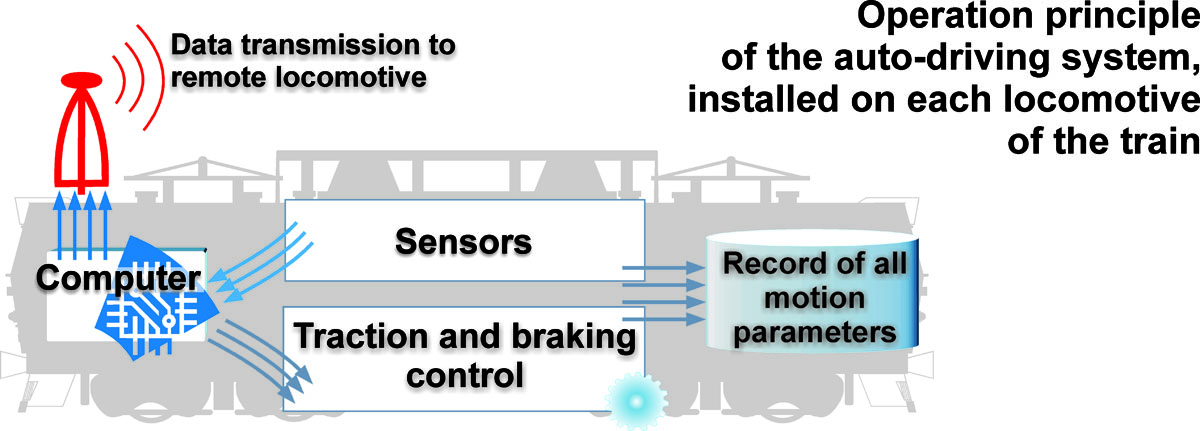
Data registration during the trip and its decoding at the depot
During the trip there is a registration on data storage (“RPDA cartridge”) of locomotive parameters, the technical condition of the locomotive, actions of locomotive crew, energy consumption. The decoding and interpretation of stored data is produced by special software in the depot, which allows a comprehensive analysis of the processes associated with the movement of trains, system regimes, locomotive condition, and power consumption. The software also gives trip summaries for future analysis.

Application effect components
The implementation of ISAVP-RT DP control system increases corridor throughput on the 4-6%, increases route speed of up to 1000 km /day and, consequently, reduces the turnover traffic on 20%.
Proper selection of system control by ISAVP-RT system, a decrease in the number of manual control operations of locomotive control, and increased driver awareness in low visibility conditions (snow, rain, fog, and night) makes driver’s labor much easier and improves traffic safety.
ISAVP-RT system vs. analogues
The closes analogue for ISAVP-RT is GE “Locotrol” DP system. The goals and benefits of both systems are the same; there is some difference in system’s architecture, radio channel organization and traffic, pipeline control. ISAVP-RT system developers are more experienced in autodriving systems design; GE is much more experienced in DP control itself.
ISAVP-RT provides full synchronous and asynchronous control of DP locomotives even on very narrow radio channel (only 10 bytes/sek) due to use of special auto-driving algorithms.
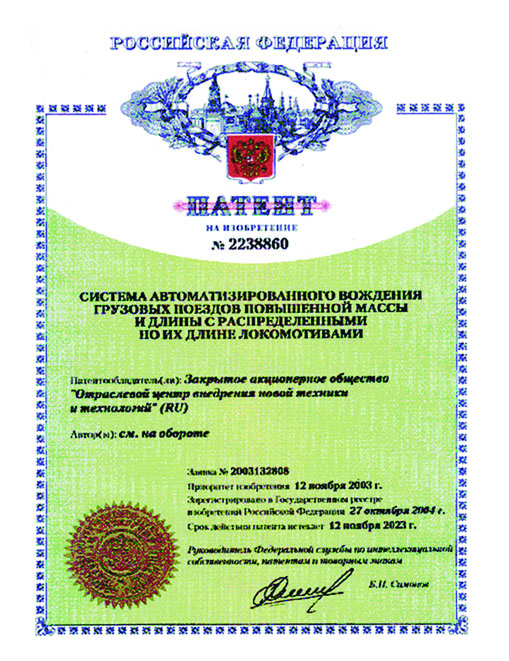
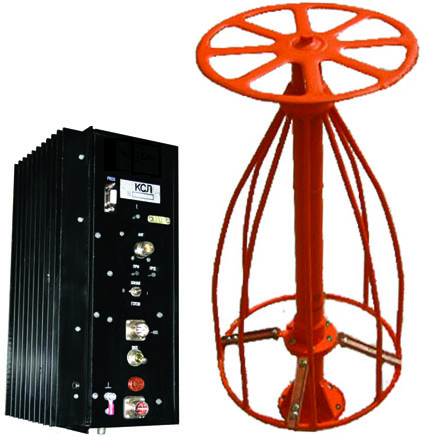
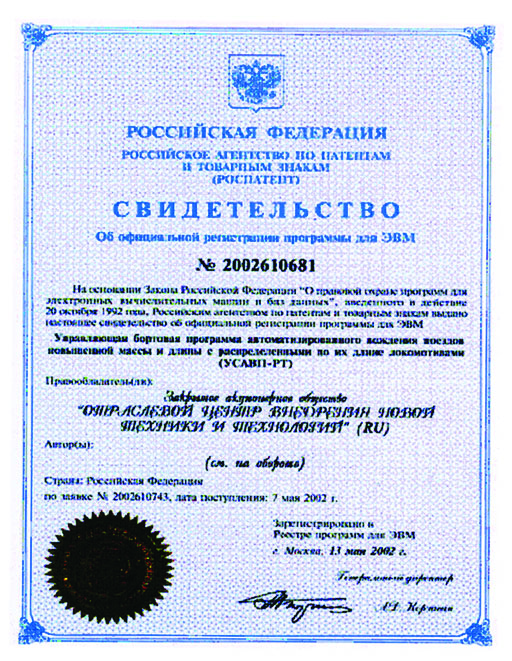
| Technical specifications | |
| Power supply voltage of direct current | 35..65 V |
| Consumed power, maximum | 80 W |
| Communication channel | 132..174 MHz |
| Channel bandwidth | 12.5 kHz |
| Number of communication channel ranges | 8 |















